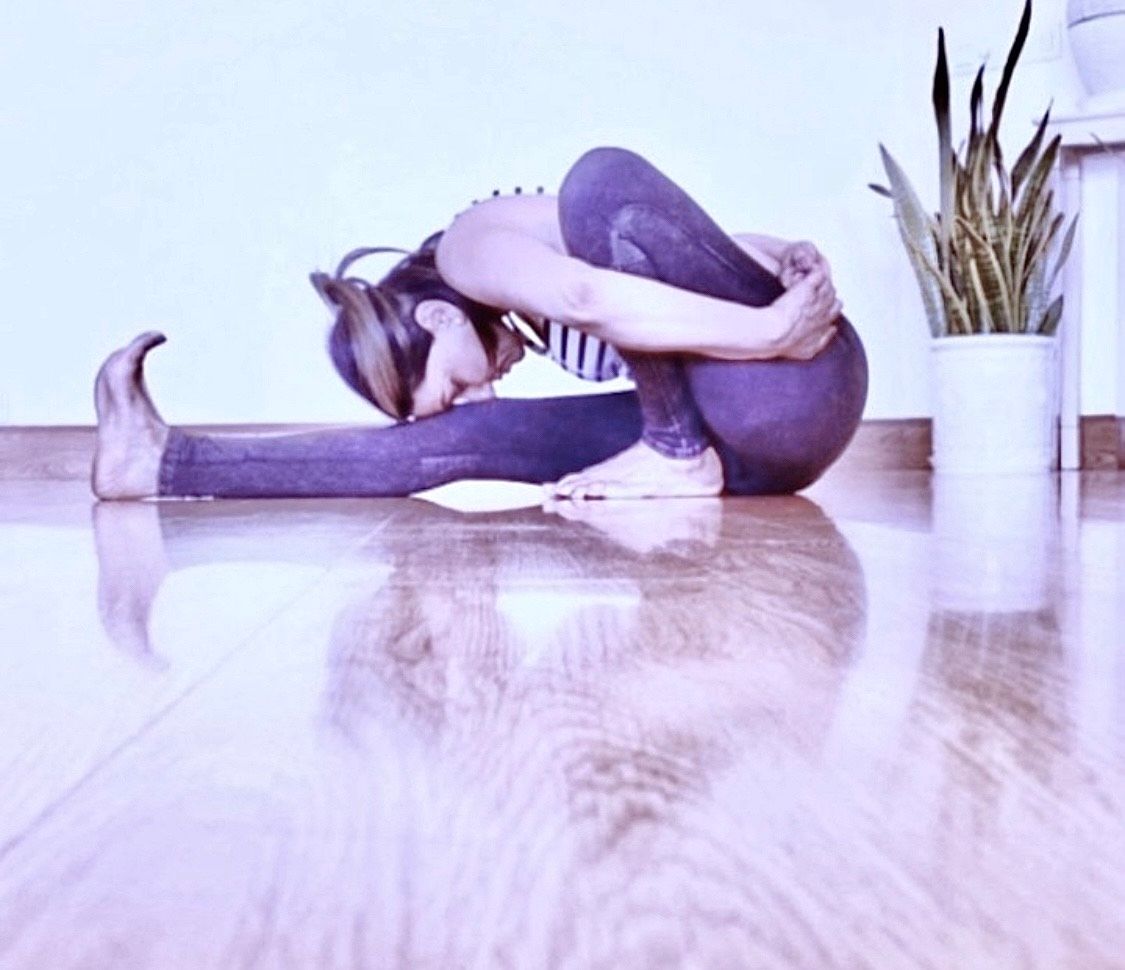If we stumble or falter or hurt ourselves during our yoga practice, we must ask our teacher the reason why this occurred. Once armed with the knowledge of why this happened to us, we can now prevent it from happening the next time.
There are any number of reasons why one could suffer from an injury while practicing yoga. Some people might suddenly struggle with cramps in any muscle group in the body others can inadvertently sprain a joint, often the ankle, wrist or neck. One may strain the back with an excessive stretch or by a sudden movement like jumping forward or back into a pose. Or one may lose one’s balance and fall out of a posture, injuring some body part.
A Yoga Class should begin with a quick warm up to get the blood flowing, to warm up stiff and cold muscles so that one can sensibly proceed into deeper stretching. All the major joints of the body should be gently worked out in this warm up to avoid joint sprains. Cramping again happens due to sluggish blood flow in any body part, which is suddenly made to work hard or stretch. The warm up usually ensures that cramping doesn’t occur.
Let’s delve into some of the most common injuries and how to prevent them from happening to us.
Wrist Strain
This injury can often result from improper alignment in weight-bearing poses like Plank and Downward Dog. To prevent wrist strain, ensure even distribution of weight across the hands, spread and engage the fingers and press into the knuckles to relieve pressure from the wrist. In addition, work on wrist strengthening and forearm strengthening through specific exercises. So, if you find you suffer from wrist strain often, or have trouble bearing weight on the wrist, factor in ten minutes before your yoga class to get these wrist strengthening exercises done.
Lower Back Pain
Lower back pain can be caused due to incorrect posture or over-stretching in deep forward bends; and sometimes due to exercises like double leg raises which puts a lot of strain on the lower back. To prevent lower back pain, practitioners need to always maintain a neutral spine (tailbone tucked into the body to prevent the lower back from over arching) and be mindful of engaging core muscles for support. It’s helpful to remember that, if bending forward is straining one’s lower back, then one should bend the knees slightly to reduce the excessive stretch and pressure on the back. One should try to gradually increase flexibility and strength through regularity of practice rather than push oneself beyond one’s limits.
Shoulder Injuries
Overextending or collapsing the shoulders in poses like Headstand and ‘Chaturanga dandasana’ can lead to rotator cuff injuries. To prevent this, we need to keep our shoulder muscles engaged and shoulders actively pressing down, away from the ears. If the shoulders lose strength, the back begins to hunch, so we should modify postures and attempt the posture to our own capacity. We must strength train our shoulder muscles and always practice proper alignment. If we need help, we must use props like straps and blocks to get into the pose while protecting the shoulder joint. For instance if we cannot clasp our hands behind our back, we can use a yoga belt to bridge the gap.
Knee Pain
Twisting the knee while trying to force it in positions like the Lotus posture or placing excessive pressure on it in standing poses like Warrior can cause injury. To avoid knee pain and injuries, do not over bend the knee in standing postures. When we bend the knee in a standing pose we should align the knee over the ankle, and not beyond that. In such a position the weight is born by the leg muscles, the feet and hips; instead of maximum weight getting pushed onto the knees. Also avoid deep knee bends if one is not sufficiently flexible. Use blankets or blocks for support in seated poses. For example if sitting in ‘Vajrasana’ causes too much of a stretch in the quads and knees, then place a folded blanket between the calf and thigh, so the hips don’t have to come down all the way and the stretch on the knees is gentle. A sensible, regular yoga practice, where the knee joint is repeatedly worked in different ways, will keep strengthening and building flexibility into surrounding muscles, helping to stabilize the knee joint more and more.
Neck Strain
Postures like the Plough and the Shoulder Stand press the chin into the chest and stretch the neck muscles excessively. If one suffers from neck ailments like Cervical Spondylosis, then these postures are contraindicated. To prevent neck injuries, always maintain a correct positioning of the head, keeping the chin pulled back towards the chest, so that the back of the head is always aligned with the back. If the heavy head falls forward then the slender neck will get strained. Also after postures like Plough and Shoulder stand one must always do a counter stretch posture, like the fish (Matsyasana) to ease out the neck muscles.
Conclusion
Yoga can be a rewarding experience. However, it comes with it’s challenges as well. To learn yoga correctly and avoid injuries, one should practice with a qualified teacher who can help one understand the science of the art of yoga. I invite you to join Online Yoga Classes in Perth at Yoga with Sapna today!
